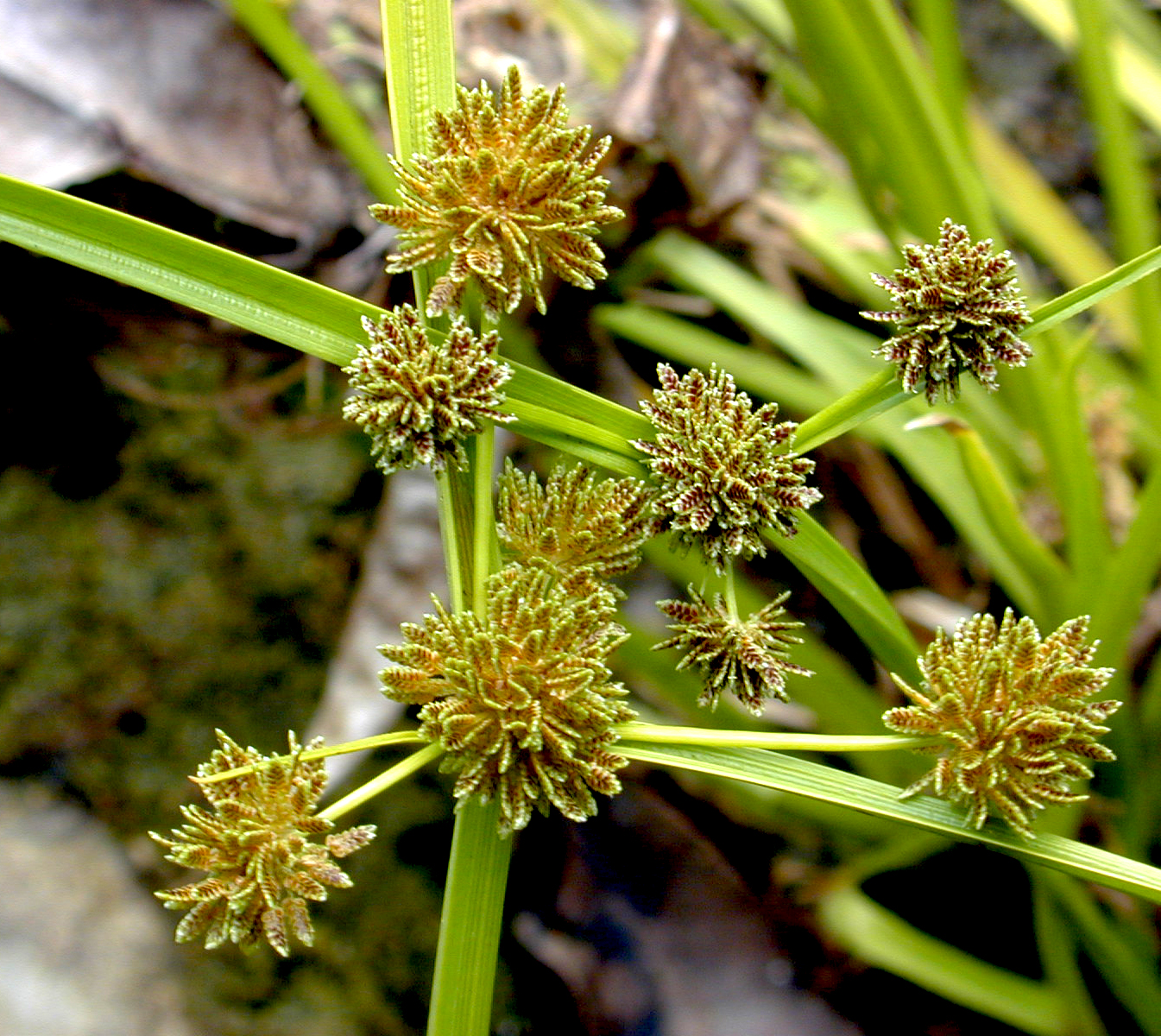|
|
|||||||
 CPIE MultiAccess Key:
CPIE MultiAccess Key:
Family Cyperaceae ...includes Juncaceae and TyphaceaeNOTE: FUNCTIONAL—BUT STILL UNDER CONSTRUCTIONThe MAK_1 data base contains all common Hawai‘i species, except is incomplete for genera: Machaerina and Mariscus. The data base is sparse for Guam sedges. A dichotomous key to Hawaiian and Guam plants covered in this key is available at Grasses,Sedges, and Rushes of the Hawaiian Islands and Grasses,Sedges, & Rushes of the Island of Guam. |
DATABASE: MAK_1 for CYPERACEAE et al.: TOTAL DB LINES: 159
|
 |
|||||
|
|
|||||||
|
This key covers plants likely to be a sedge (Family Cyperaceae) or a true rush (Family Juncaceae). The DB "MAK_1" presently contains a total of 159 taxa covering both grasses, sedges, and rushes known to occur in the Hawaiian and Marianas Islands. Also included in the DB are marsh plants in the Typhaceae (cattails). Estimated total sedge and rush taxa occuring in Hawai‘i is ~75 species; for the Marianas, this number is about 41. The following list of character choices applies specifically to sedges, rushes, and cattails. A separate MAK grass key is offered to identify grasses. To limit results to species known from the Marianas, use the check box above the SUBMIT buttom at the bottom.
Most terms are defined in column 2 below. However, should you need to gain greater familiarity with the terminology used in this key, consult the companion dichotomous key: Grasses and Sedges of the Hawaiian Islands and Guam section on The Sedges beginning on page vi, on sedge plant structure (page vii), or on sedge flower characteristics (page viii). Careful examination of the flower structure under magnification may be necessary to identify some sedges and the MAK key includes species-specific links to appropriate couplets in the CPIE dichotomous key: A Key to the Grasses and Sedges of the Hawaiian Islands & Guam. In other cases, a reference source is provided that may be consulted for a more detailed description of the species or a picture. |
CHARACTER MATCH LIST
|
||||||
|
Select a best choice (or none) from each category: |
Species - Common Name - Status - Reference |
||||||
|
Select plant characteristics from far left column. == Results will appear here == | |||||||
|
|
HABIT: Nearly all sedges spread by either above ground stolons or underground rhizomes. In a "spreading" sedge, plantlets arise along horizontal runners and are spaced apart; in a "clumping" sedge, the rhizomes are short, and the plant is a dense cluster with multiple culms. Selecting wetland HABITAT (growing in or near water) will restrict the list to only FACW and OBL wetland plants. SIZE: "small" sedges are ankle to shin high, "medium" sedges are knee to waist high; "large" sedge plants are chest high to over your head; "very large" sedge plants approach or exceed 3 m (10 ft) in height but are very rare (see also Basic Sedge Characteristics).
CULM: sedge culms are non-woody, typically straight and vertical, and usually not hollow like most grass culms. In the majority of sedges, the culm is three-sided (trigonous), but can be round in cross-section (terete). LEAF: If leaves are present, these are always linear, typically folded to some degree (trigonous), but may be especially narrow (width under 2 mm or ~1/10 in): delicate, thread-like. "Broad" leaves are strap-like (flat) and closer to 2 cm (3/4 in) across. Leaves reduced to basal scales are counted as absent in the key. Also, do not count the bracts just below an inflorescence as leaves. INFLORESCENCE: The form of the inflorescence or flowering head is a critical characteristic for identifying a sedge. Review at Basic Characteristics of Sedge Flowers. The inflorescence develops at the top of or branching off of the upright culm. As used here, a "spike" is an arrangment of the florets attached around the rachis (main axis above the culm); spikelets attached directly to the culm (lacking pedicels) are either "cespitose"—single, terminating culm; or "digitate"—several, attached at a common point without or with short pedicels. A raceme has spikelets on two or more branches coming off the rachis at different points. Three or more branches coming off the culm at or near a single point form a digitate (finger-like) raceme called a "corymb". Branching that is complex is termed "paniclulate". BRACTS - the inflorescence of sedge plants often bear leafy bracts below (subtending) the spikelet clusters. Rushes typically lack multiple bracts. FRUIT - The fruit of all Cyperaceae is a single-seeded nut called an achene. Significantly different is the fruit of the Juncaeae: a capsule containing several to many seeds. The fruits of a cattail are very small and dispersed by the wind. |
NOTES:
INSTRUCTIONS: Select a best choice from each of the categories in the far left column. Do not make a selection in any category that you do not know if it applies to your specimen. If more than one choice applies in a category, it is usually better to choose the lower one. However, you can CLEAR and try different combinations. It is best to CLEAR before submitting a new combination of properties. Understand that the TERMINOLOGY used in this key—as defined in the column to the left and on introductory pages to our A Key to Grasses and Sedges of the Hawaiian Islands—may not always match exactly that used by sedge specialists, having been adapted here to make this key friendlier to the casual user.CONFIRMING AN IDENTIFICATION will require careful consideration of the species description provided in the reference link or some other source (see MAK Useful Links and the grass/sedge key Bibliography page for suggestions). An active link presented in the Reference column will open on the relevent couplet in the dichotmous key: A Key to Grasses and Sedges of the Hawaiian Islands, providing descriptive information on that species. Additional details can be gleaned by "backing off" the couplet (a process of following links backwards from the terminal couplet)."MAN" in this column refers to Vol 2 of Manual of the Flowering Plants of Hawai‘i. "E&P" refers to Erickson and Puttock, 2006, Hawai‘i Wetland Field Guide, an excellent source of photos (by Laura Crago) and descriptions of wetland sedges and rushes. "[fig]" indicates a photo or drawing available in the referenced source.
|
|||||